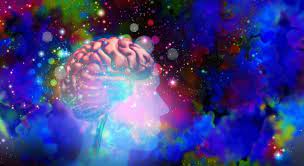
The terms "hallucinogens" and "psychedelics" are often used interchangeably, but they represent distinct categories of psychoactive substances. In this blog post, we will explore the nuances between hallucinogens and psychedelics, shedding light on their definitions, effects, and cultural contexts.
Hallucinogens, broadly speaking, refer to substances that alter perception, mood, and consciousness. They induce hallucinations, sensory distortions, and sometimes profound alterations in thought processes. The term encompasses a wide range of substances, each with unique properties and effects.
While all psychedelics fall under the category of hallucinogens, not all hallucinogens are psychedelics. Psychedelics specifically refer to substances that induce altered states of consciousness characterized by enhanced sensory perception, introspection, and often a sense of interconnectedness.
Understanding the differences between hallucinogens and psychedelics involves examining their mechanisms of action in the brain.
Hallucinogens often interact with serotonin receptors in the brain, influencing mood, perception, and cognition. They may also affect other neurotransmitter systems, contributing to their wide-ranging effects.
Psychedelics primarily work by binding to serotonin receptors, especially the 5-HT2A receptor. This interaction leads to altered sensory perception and a cascade of effects that result in the characteristic psychedelic experience. The impact on the default mode network in the brain is thought to play a crucial role in the altered sense of self and ego dissolution experienced during a psychedelic trip.
The use of hallucinogens and psychedelics has deep cultural and historical roots, often tied to spiritual or religious practices.
Substances like peyote, used in Native American rituals, and the psychedelic brew Ayahuasca, employed in Amazonian shamanic traditions, have been integral to cultural practices for centuries. The use of hallucinogens has been intertwined with rites of passage, healing ceremonies, and divination.
The 1960s witnessed a surge in the use of psychedelics as part of the counterculture movement. LSD became an emblematic substance, associated with anti-establishment sentiments and a quest for expanded consciousness. The era also saw prominent figures like Timothy Leary advocating for the therapeutic and transformative potential of psychedelics.
Both hallucinogens and psychedelics are gaining recognition for their therapeutic potential in mental health treatment.
Compounds like ketamine are being investigated for their antidepressant effects, with ketamine infusion therapy showing promise in treating conditions like treatment-resistant depression.
Psilocybin, in particular, is undergoing clinical trials for its potential in treating various mental health conditions, including depression, anxiety, and PTSD. MDMA-assisted therapy is also being explored for its ability to enhance the therapeutic process.
Understanding the differences between hallucinogens and psychedelics also involves acknowledging potential risks and considerations associated with their use.
Hallucinogens can induce unpredictable and intense experiences, leading to anxiety, paranoia, or psychotic reactions in susceptible individuals. The dissociative effects of substances like PCP can result in impaired judgment and increased risk of accidents.
While psychedelics are generally considered safe when used responsibly, they can lead to challenging experiences, commonly referred to as "bad trips." Additionally, individuals with a personal or family history of psychotic disorders may be at an increased risk of adverse reactions.
In summary, the distinction between hallucinogens and psychedelics lies in the specific effects and mechanisms of action of these substances. Hallucinogens encompass a broader category, while psychedelics represent a subset with unique characteristics. Both have played significant roles in cultural and historical contexts, and contemporary research is uncovering their therapeutic potential. As societal attitudes evolve and scientific understanding deepens, a nuanced appreciation of these substances becomes essential for informed discussions and responsible use.
Comments